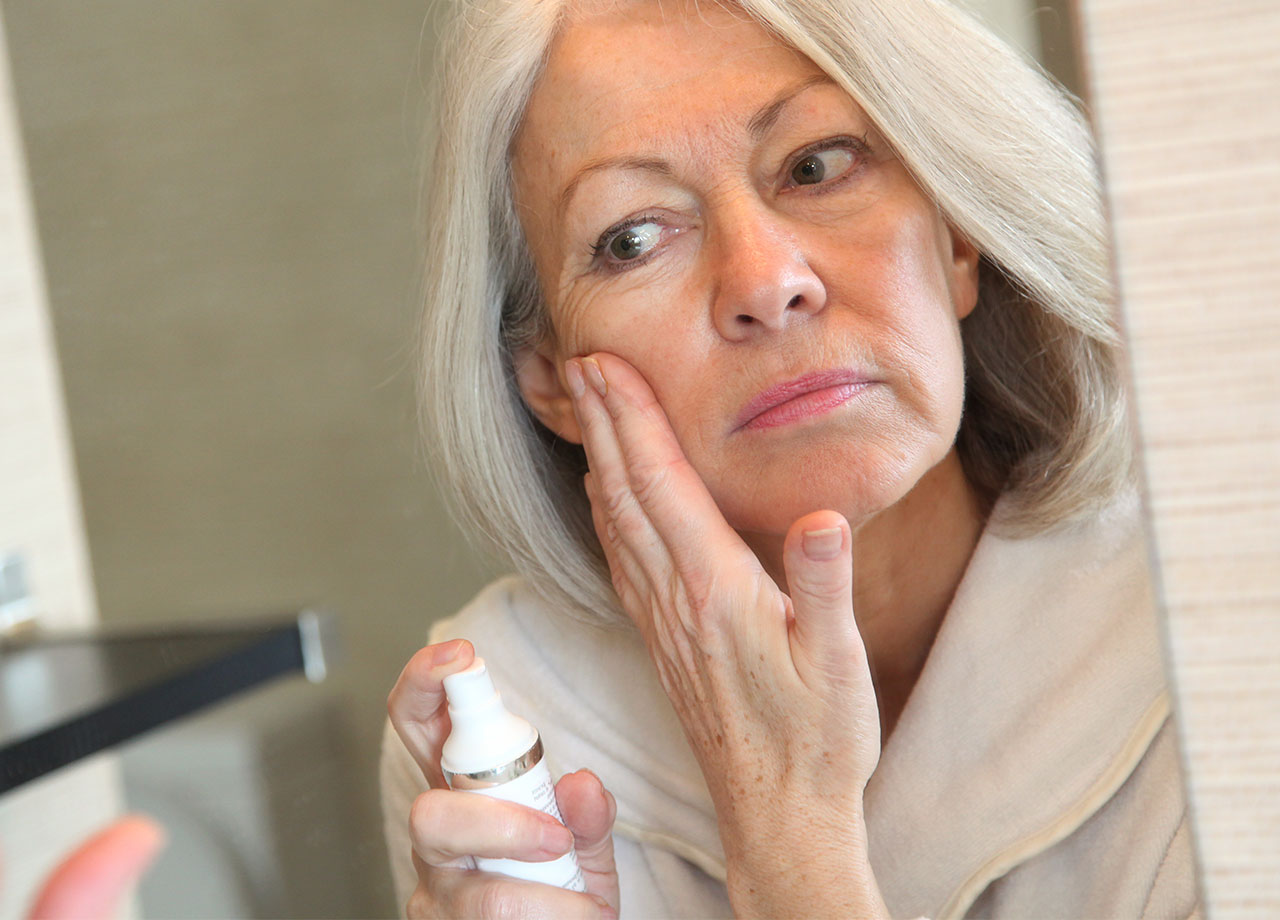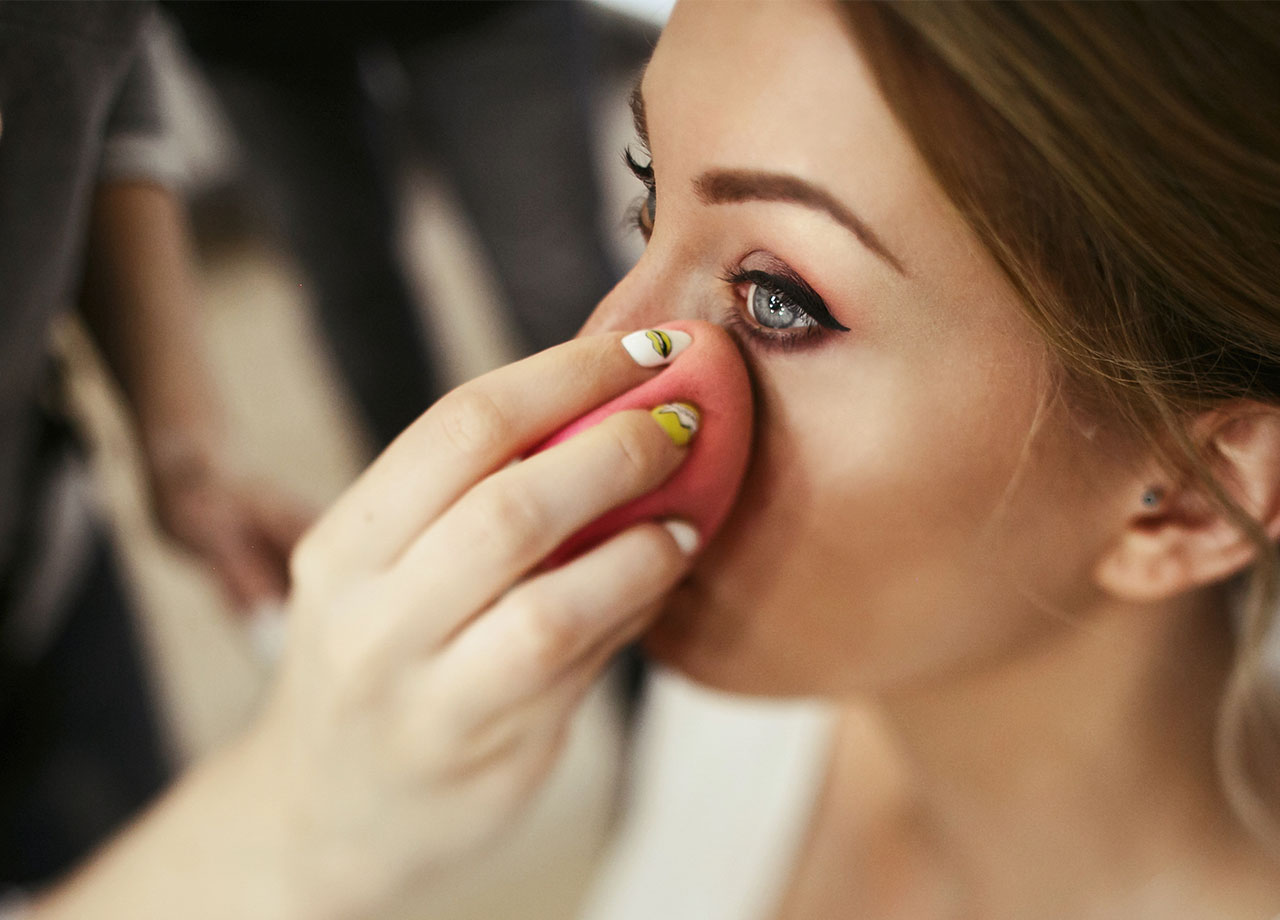The entire point of wearing makeup is that it should enhance your features and make your skin look better, not worse. So on those annoying occasions when we spend a lot of time skillfully applying foundation or contour makeup, only to watch it settle into fine lines and wrinkles a few hours later, we want answers. We want to know what has gone wrong so that we can correct the situation and find a better application method.
We all have texture on our skin — whether that means fine lines, wrinkles, or simply pores that makeup can magnify by about times. In some instances, yes, the way we are applying our makeup is the reason for its less-than-stellar results. But there are other times when it’s the product itself at fault — and knowing which formulations to avoid for our skin becomes an important factor in making our makeup look better.
Here are five common reasons why your makeup might be settling into fine lines and wrinkles.


Not Waiting For Skincare To Absorb
You’ll know you’re making this mistake if, on some days, your foundation glides right onto your skin, and on others, it becomes a watery mess as it’s making contact with your skin. What could the reason be for this difference? Your skincare! If you are applying foundation, a serum, and a sunscreen and NOT waiting for all of those products to absorb before then adding a foundation, you are essentially layering one liquid on top of another without giving your skin time and space to let those products sink in and absorb. As a result, your makeup application can appear messy and will more easily streak. Always wait about 10 minutes between your last skincare step and your face makeup application to ensure better results.

Not Applying Primer
This step is crucial: foundation should never be applied to bare skin without a primer barrier in between. As you already know, your skin has texture and it’s all too easy for foundation, concealer, and contour makeup to creep into those areas of texture and enhance them — which isn’t likely what you’re going for. A primer smoothens out your skin, minimizing the look of pores and fine lines and “blurring” them so that when you apply foundation, it goes on more evenly and can be blended well. Choose a primer that complements your skin type and addresses any issues you have with your skin — there are primers that make skin more hydrates, primers that make skin look more matte, etc.

Not Blending Your Makeup
There’s an art to blending foundation and concealer — and plopping makeup on your skin without properly blending it is going to lead to uneven patches and an enhancement of texture. After applying your foundation in pea-size amounts to those areas of your face that you feel could benefit from it, take a large makeup brush and lightly dab it onto the skin and upward for a natural look. You can also use a dampened Beauty sponge or your fingers (which may not allow you to blend as well as you would with a tool), but the key for both is light dabs, preferably performed in natural light so that you can see what your makeup will look like outside. Don’t forget to blend makeup onto your neck, as well.

Not Using Powder or Settling Spray
After blending your foundation and concealer, your face may look like a work of art — but here’s where it becomes important to ensure that it stays that way. Makeup needs to be set so that it lasts longer than an hour and translucent powder or setting spray — or both — can help. Apply powder with a large, fluffy brush in dabbing motions around your face. A few spritzes of a setting spray can also help extend the life of your makeup so that you aren’t noticing cracks and smearing after a few hours of wear.

Using the Wrong Foundation Formula
You can have the greatest makeup application method in the world, but without a foundation formula that works for your skin type, you aren’t going to have a good makeup outcome. Here’s what this means. If you have oily skin, choosing a foundation that contains oils or even one with an added boost of hyaluronic acid, can prove too watery in consistency for you. If, on the other hand, your skin is usually parched for moisture and you’re choosing matte formulas, you can find yourself with a full face of sticky, dry makeup that enhances dry patches on your skin. The trick to great makeup is both a good application technique AND choosing formulas that honor your skin type. Read labels carefully and ask a beauty expert at the store for advice if you aren’t sure which is right for your skin.


























